The saber-toothed tiger clan is on the search for a new leader!
Players must prove themselves wise and resourceful by collecting the most supplies, attracting mammoths, bartering successfully with other clans, and paying homage to the old nature gods in order to be elected clan leader! Not only must you do this, but you must do it all while not forgetting to take care of the powerful, saber-toothed tiger Honga! Take care of him and he remains happy, neglect him and he will eat up all your supplies.
Do you have what it takes to become the most worthy leader?
What is Honga?
Honga is an action selection, resource management game designed by Günter Burkhardt and published by family gaming powerhouse HABA.
Set in the prehistoric period, 2-5 players ages 8 and up will each try to win the game by earning the most victory points through a variety of methods.
Players can each take different paths to victory and manage to keep the game a close race to the finish that clocks in around a 45 minute play time.
What’s in the box?
There is no shortage of great components packed inside this game.
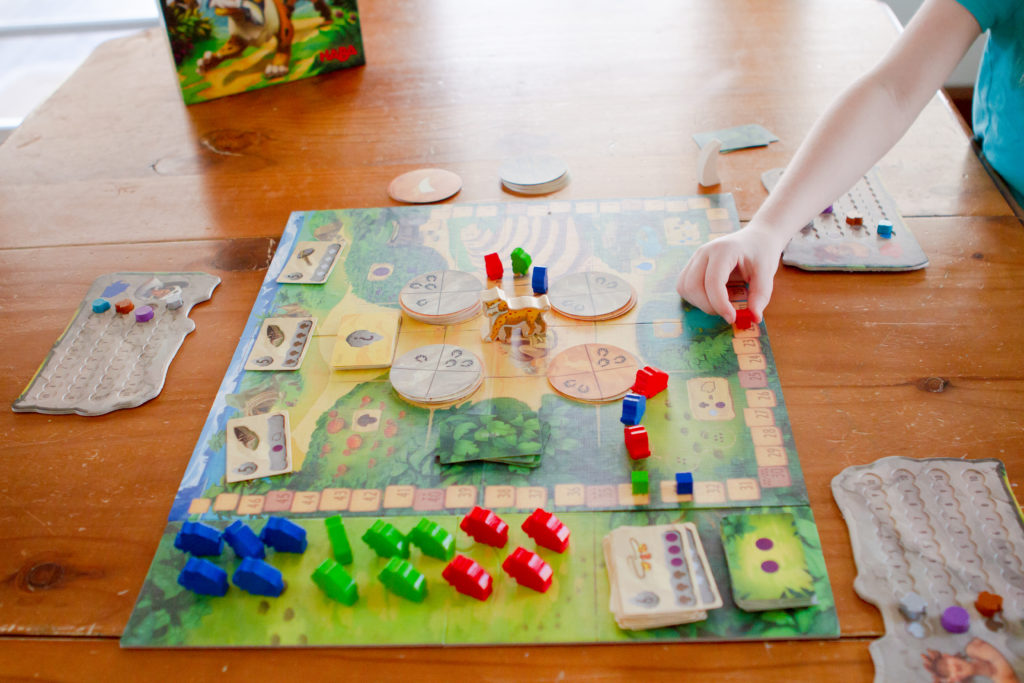
All of the quality wooden pieces that you would expect to find from HABA are here. From the titular Honga saber-toothed tiger, to the mammoths, player pieces, and food markers, there are over 60 wooden pieces that are vibrant in color and highly well made.
The board is really well designed and easy to read without being distracting. All of the places for the cards and components are clearly marked without and work well with the art of the game.
The mammoth depot is a clever two piece puzzle that helps save on storage space while still allowing all 30 of the mammoths to sit comfortably on it if playing with a full 5 players.
The player boards are really well made as well. These are thick cardboard trays that have cut outs in each of the resource spaces to help players keep track of their amounts during the game. This easily could have been skimped on and not had the die cuts, but this would have also impacted the play experience negatively. Because of the nice die cuts, if your table or board gets jostled a bit, you don’t lose your resource count. This is a really nice touch.
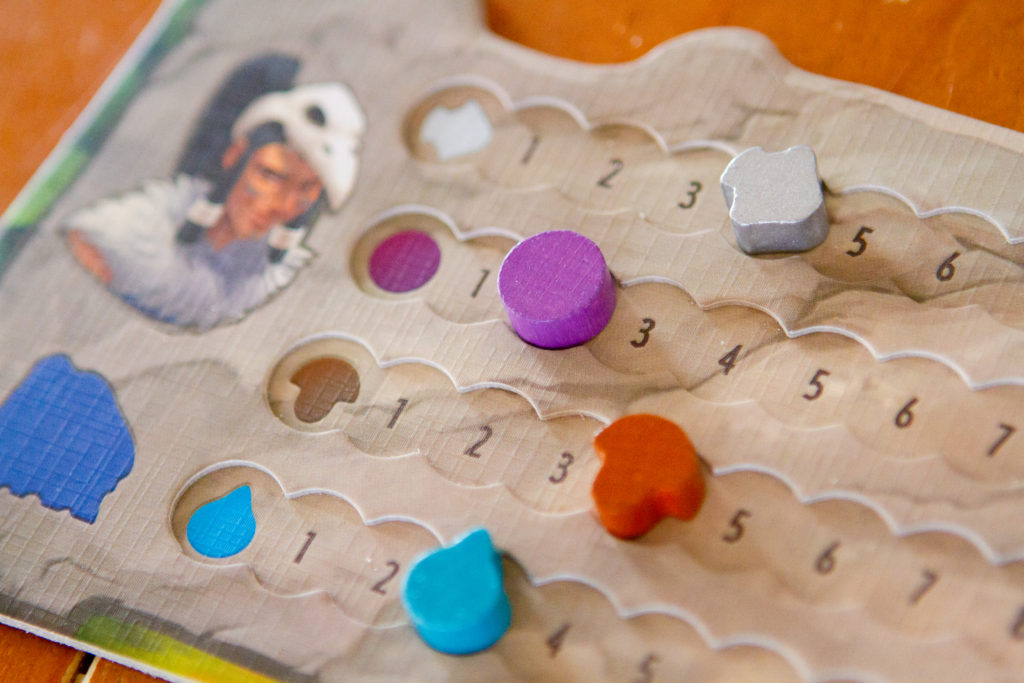
The action disks, bonus cards, and barter cards are all a nice thick card-stock that should hold up nicely with multiple plays.
There is no insert inside the box but HABA has included enough ziplock bags to keep everything nicely organized and easy to set up for play. There are enough bags to individually bag up each of the five players items so you can can just hand a bag to each player in their desired color.
Everything sits comfortably inside the box without having to treat it like a tricky puzzle to fit it all back in.
How does it play?
While there is a lot going on in Honga, the overall mechanics are very simple.
In clockwise order, players will place an action disk on one of the four round spaces to earn various actions. Honga, the voracious saber-toothed tiger, must first be managed before actions can be carried out. Then players will earn their actions, resolve them on their player board or the game board if necessary, and then will draw a new action disk to end their turn.
Action Selection
As stated, the goal of Honga is to win the game by earning the most victory points, thus making you the new saber-tooth tiger clan leader. You’ll do that by selecting actions using the actions disks to help you accomplish your goals, gather resources, and earn victory points.
The action disks are circular cards separated into four sections by a cross. In certain sections on the disk, hands will be present pointing in a particular direction. Players use these action disks and place them in one of the four round spaces, using the cross on the disk to correctly align it on the board.
Rotating the action disc will rotate the hands, making them point at different actions on the board, giving the player multiple options to choose from each turn.
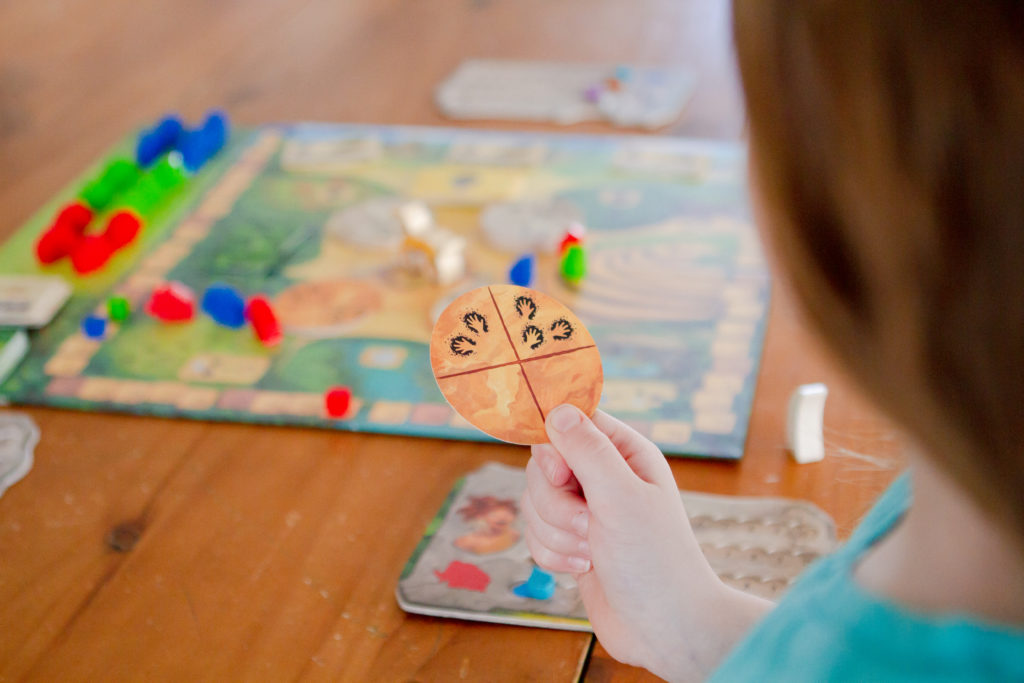
Honga
After players have placed their action disk, and before they can take their actions, Honga must be cared for.
You care for Honga by looking at the action disk you just played to make sure that at least one hand of the action disk is pointing to the HONGA space. If so, Honga remains in the center of the board and you can take your actions.
If however there are no hands that point to the HONGA space in the center, then you have not cared for Honga and he instead joins you on your player board.
Honga makes your quest to become clan leader much more difficult though because as soon as he joins you you must feed him immediately with one unit of the uppermost food pieces (fish) on your player board.
If you do not have any fish available, then you must give him a piece of the next available etc. etc. If there are no resources available on your mat, and all fish, berries, mushrooms, and water are empty, then he will help himself to a mammoth on your player tray or mammoth track. If your player board is completely empty, then Honga does not eat anything, but he still does not leave you.
Honga stays with you from turn to turn, immediately eating another of your uppermost resource at the start of each new turn, even if you have a hand pointing to the center of the board.
The only way to get rid of Honga is to either play an appropriate bonus card (more on those below) or if another player fails to play an action disk with a hand pointing to the Honga space. If this happens, then this player will now be joined by Honga.
This is important to point out. Even if Honga is plaguing another player you must still place your action disk with a hand pointing to the HONGA space. Taking care of Honga is a central part of the game, so if you do not do this on your turn, then you will take Honga to your player mat and feed him your resources.
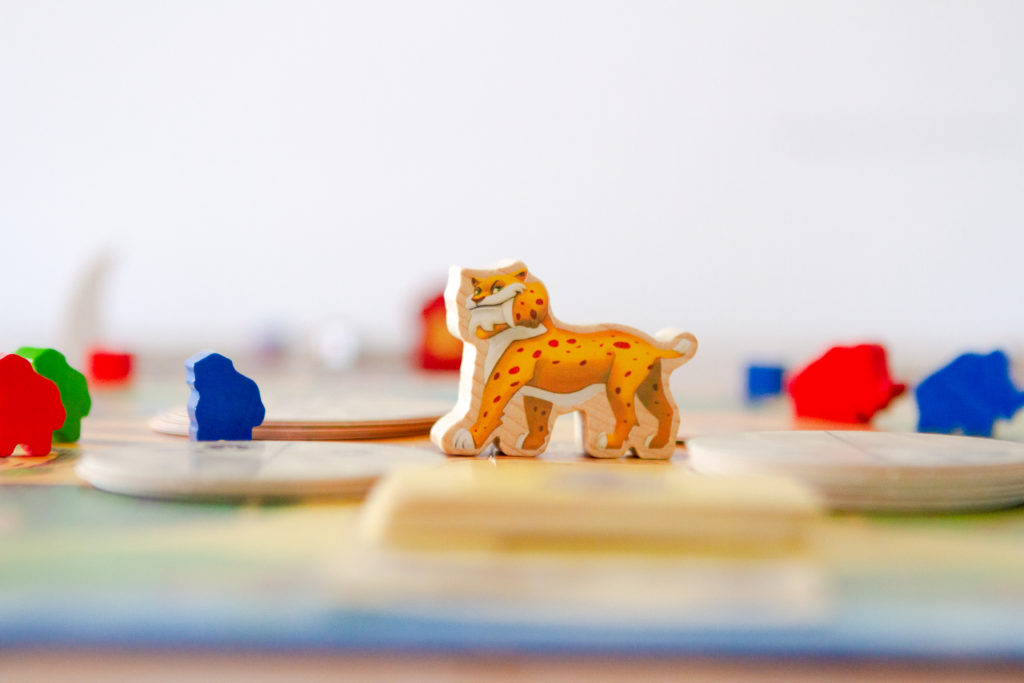
Actions
Once you’ve made sure that Honga is cared for, you can carry out your actions. There are eight different action options available. The number of hands pointing to a particular action indicates how many times you may carry out that chosen action. So if there is one hand pointing to it, then you may only do it once. If there are two, you may do it twice, etc etc.
Resources:
Four of the eight actions available to you are to collect resources. The resources available in the game are Fish, Berries, Mushrooms, and Water. You will receive one resource for each hand that points to that particular space, adding these to your player tray to keep track.
While the fish, berries, and mushrooms all function the same, the water droplets are just a tad different. At any time during your turn, you may use two water drops as a wild for a fish, berry, or mushroom.
Bonus Cards:
You can also choose to look through the forrest in search of items that can help you in the form of bonus cards. For each hand that points to the bonus cards you draw one bonus card, look at it, then place it face down on the left side of your player tray. You may only use these bonus cards starting on your next turn.
Bonus cards can only be played after you have taken care of Honga and can be carried out at the same time you take your actions. You may play a maximum of two bonus cards per turn. Each bonus card’s iconography and its corresponding effect is explained in the rulebook.
Mammoths and the Mammoth Tooth:
If a hand points to the mammoth field you may attract one mammoth. This costs you one fish, berry, and mushroom. The mammoth wont join you on your player board yet, however. First it will join the mammoth herd on the field. The youngest (newest) mammoth is placed on the first space and moves all of the older mammoths up one space further. If a mammoth is pushed from the last space, then the player with the matching color collects it and places it on their player board.
If you have the majority of mammoths in the mammoth field, then you take the mammoth tooth.
The mammoth tooth allows you to draw from the red action cards (the ones with the mammoth tooth printed on them.) These cards have a total of five action hands on them rather than four and can prove more helpful during the game.
If there is a tie for mammoth majority, the person who placed the last mammoth wins the tooth.
Pay homage to the old nature gods
Each player has a caveman at the base of the sacred mountain. If, on their turn, they place an action disk with a hand pointing towards the sacred mountain, then they will get to move their caveman up one step for each hand pointing towards the mountain.
The steps are numbered 1-5 and correspond to the total number of victory points the player will receive when the mountain is scored.
Once a player reaches the top of the mountain, the players all immediately receive victory points corresponding to the number on their step. Then all figures are placed back on the lowest step.
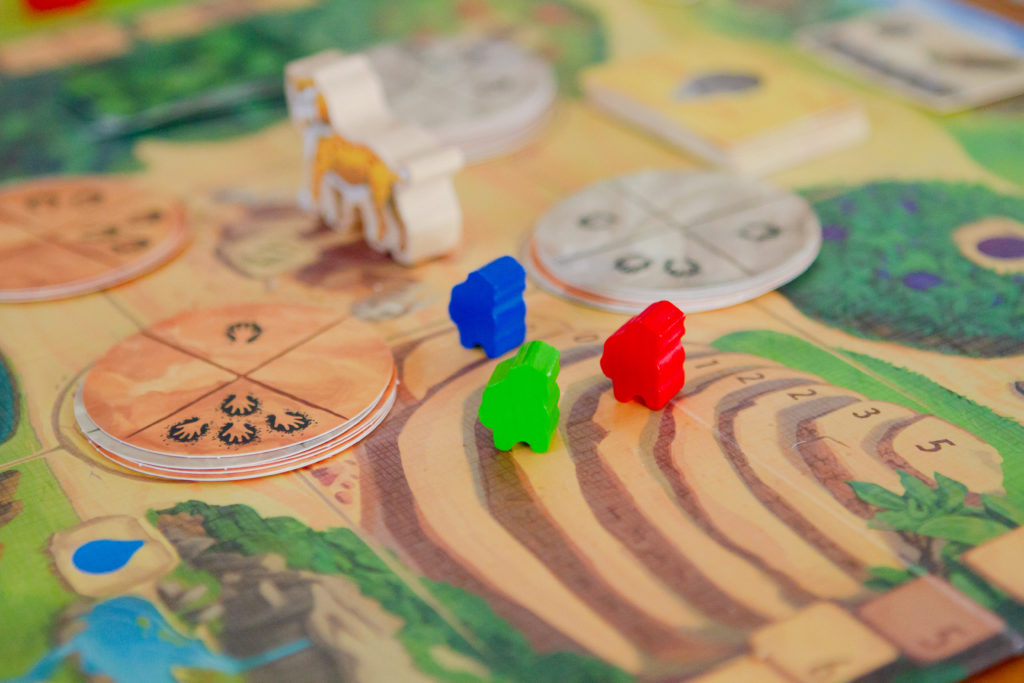
Bartering with foreign clans:
Players can turn in their collected resources to score victory points by bartering with other clans. If a hand points to the bartering you may redeem one of the three available face-up barter cards for the resources depicted.
Use the marker on your player board to subtract the used resources from your supply, then move your scoring marker forward the number of victory points earned. You may barter one time for each hand pointing to the bartering space. The bartering spaces are not refilled with new cards until after your turn, making the maximum number of times you may barter on a turn three.
End of your turn:
Your turn ends after you have done the above three items: Placed action disk, cared for Honga, resolved actions. You then draw a new action disk. If you earned the mammoth tooth, you may draw a red action disk, otherwise you draw a gray action disk.
Play continues clockwise.
Game End
The end of the game is triggered when a player surpasses a certain number of points with their scoring marker. These points are determined based on how many people are playing the game. The current round is played all the way through until it returns to the starting player.
The person with the most victory points is the winner and becomes the new leader of the saber-toothed clan!
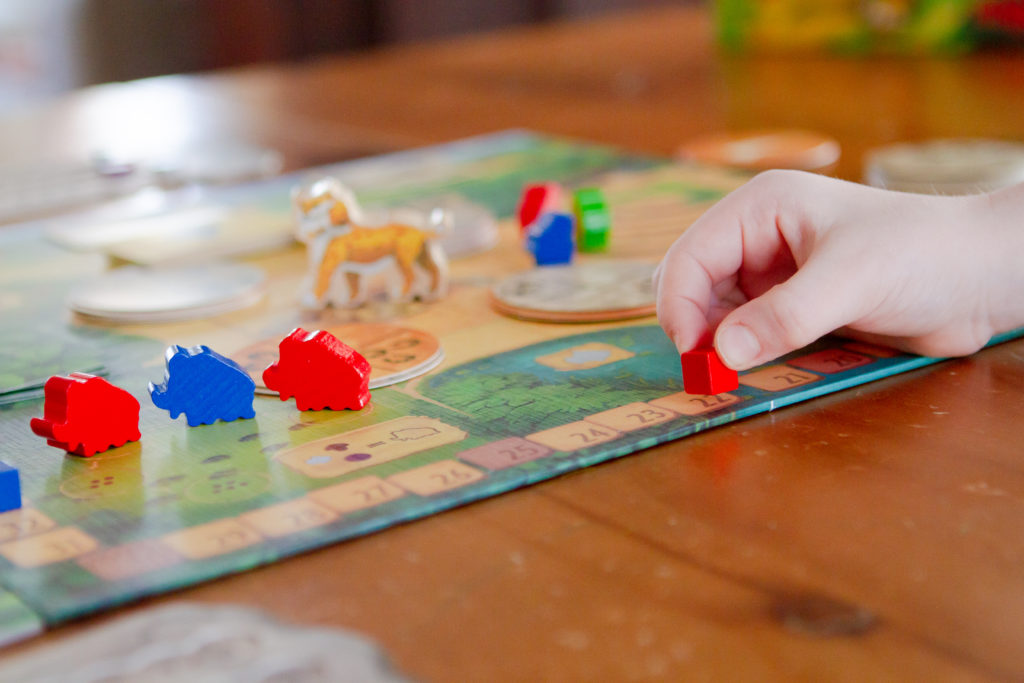
Our Thoughts
If the above description of the game seemed like a lot that’s because there is a surprising amount of meat packed into this game. This is a far cry from HABA’s simple dexterity game Animal Upon Animal, or even their light yet strategic tile placement game Karuba (which we talk about here.)
Despite there being a lot going on. The game is surprisingly very easy to learn and the mechanics are intuitive to pick up.
The action disks give new players a very easy way to see just what options they have by the hands literally pointing at what they are able to do. I love that by simply turning the disk around in either direction gives new options to consider, but making sure that players are always focused on caring for Honga by pointing a hand towards the center helps keep any tendency to over analyze your options at bay.
The publisher says the game is good for players starting at about age 8 and that feels right on the money to me. We played this with our daughter Alice who is 7 and while she was able to quickly grasp the mechanics and flow of the turns, she did have a bit of a struggle picking up the strategy. There are just simply so many options. Eight choices may not seem like a lot, but it is!
The strategy is definitely where this game gets more difficult for younger players or those new to this style of gameplay.
Because there is so much to manage and so many viable paths to victory, it was difficult for Alice to know what to focus on in order to gain victory points. The path to points is not as straight forward in this style of game because you need to follow through on a couple different steps.
Want to barter? Great! You’ll first need to gather resources, which might take a couple turns, then you’ll need to make sure you can play a card that allows you to barter when you’re ready. Knowing how best to acquire your resources quickly and efficiently is key because if you take too long, someone might score the barter card you were hoping for.
Luckily if this happens other cards are replenished and usually match up with what you have, but if it doesn’t, it can get frustrating, especially for younger players. To combat that, we played our turns all out in the open and with narration so that she could watch what we were doing and understand our thought process.
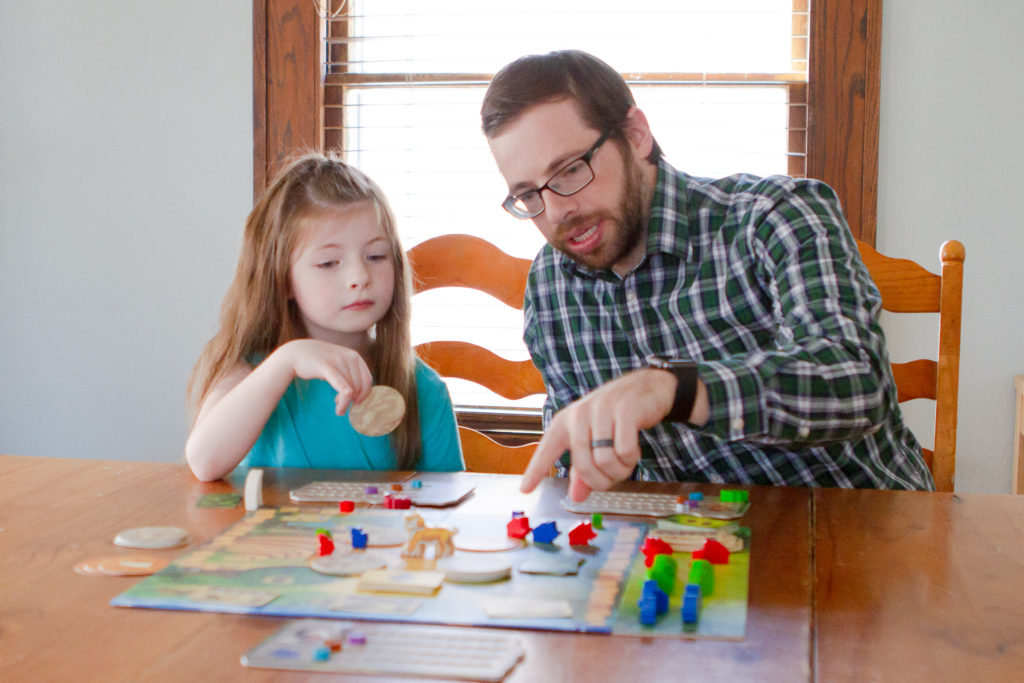
Telegraphing our moves to her helped her get a little bit more of a feel for the strategy. She still struggled a bit, but it helped her learn better than if we would have just told her what to do.
That being said, I don’t think she, at seven, is that far off from being able to get this game. I think an eight or nine year old could grasp the strategy with some practice. The game really is very cleverly intuitive so as to stay family friendly. It’s simple enough for new players to grasp, and requires enough strategy to keep more experienced gamers happy.
One of the other things I loved about Honga was that the options available to players all lead to viable ways to score a decent amount of points and win.
Sometimes you’ll play a game with lots of options but really there’s only one or two ways of winning. In Honga you can focus on any of the options available and still manage to hang in the game. You also aren’t stuck with a strategy once you’ve committed. You can do a little bit of everything or simply focus on one thing and end the game with a decent score.
The game is a bit light on player interactions if that is something you really enjoy. There really isn’t any way to harm another player. For example, you can’t send Honga to bother someone, nor can you steal any other players’ resources or victory points with bonus cards.
The main player interactions come from the passing of the mammoth tooth as players attract their mammoths to the herd, reaching the top of the sacred mountain forcing all pieces to the bottom (though they still score so you don’t hurt them too poorly,) and completing a bartering card that someone else might have been working towards.
For a family game, I like that things are kept pretty light and non-combative. There is enough to manage as is, especially for younger or new players, that the addition of a more combative style of play would be too much. While more experienced players may wish for more of that interaction, I think the game is great as is without getting too competitive.
What’s not to like?
Game wise, there really isn’t anything that I don’t like about Honga. It is a really well made game and is stuffed full of great components to make the price (around $50) justifiable.
The only thing that I noticed and found disappointing was the rulebook.
There were a few too many typos in the English version of the rules with a large error in the bonus card explanation section.
Each bonus card is pictured with the explanation of its effects listed to the right. However, on the English side only, there is a misprint with the bonus card graphics so that it is difficult to tell which card they are referring to. This might create some initial frustration when learning the game. Luckily the graphics are correct with the non-English rules and you can use the graphics on that side to match up with the explanations on the other.
It’s a small thing and mostly just unfortunate that it wasn’t caught before printing. Once you learn the bonus card effects you won’t need the reference page again.

Summary
Overall, we think Haba has another great addition to their family games series with this one. With great components and more meatier game play it is sure to hold up over the years and see a decent amount of table time.
The biggest thing that I look for in a family game is if it is something that is fun to play as an adult. While I love to play games with my kids, I don’t always want to play games geared towards kids because that tends to get boring after a while. That is not the case with Honga.
The art is definitely in the style that will invite the younger gamer, but it won’t turn off the adult either. I can see us getting out Honga to play during our game nights with our friends after the kids go to bed. Much like HABA’s other family style games Karuba and Adventure Land, Honga is just as fun to play with adults as it is with the whole family.
If you’d like to grab a copy of Honga for yourself, click HERE
To read more of our reviews of Haba’s games get started by checking out these posts:
Dragon’s Breath
First Orchard
Our Three Favorite Haba Games to Play with our Children
Game Stats:
Title: Honga
Ages: 8-99
Price: $49.99
Designer: Günter Burkhardt
Artist: Stephanie Böhm
Publisher: HABA
Published: 2018
* This post contains affiliate links at no cost to you. To read my full disclosure policy click here.*
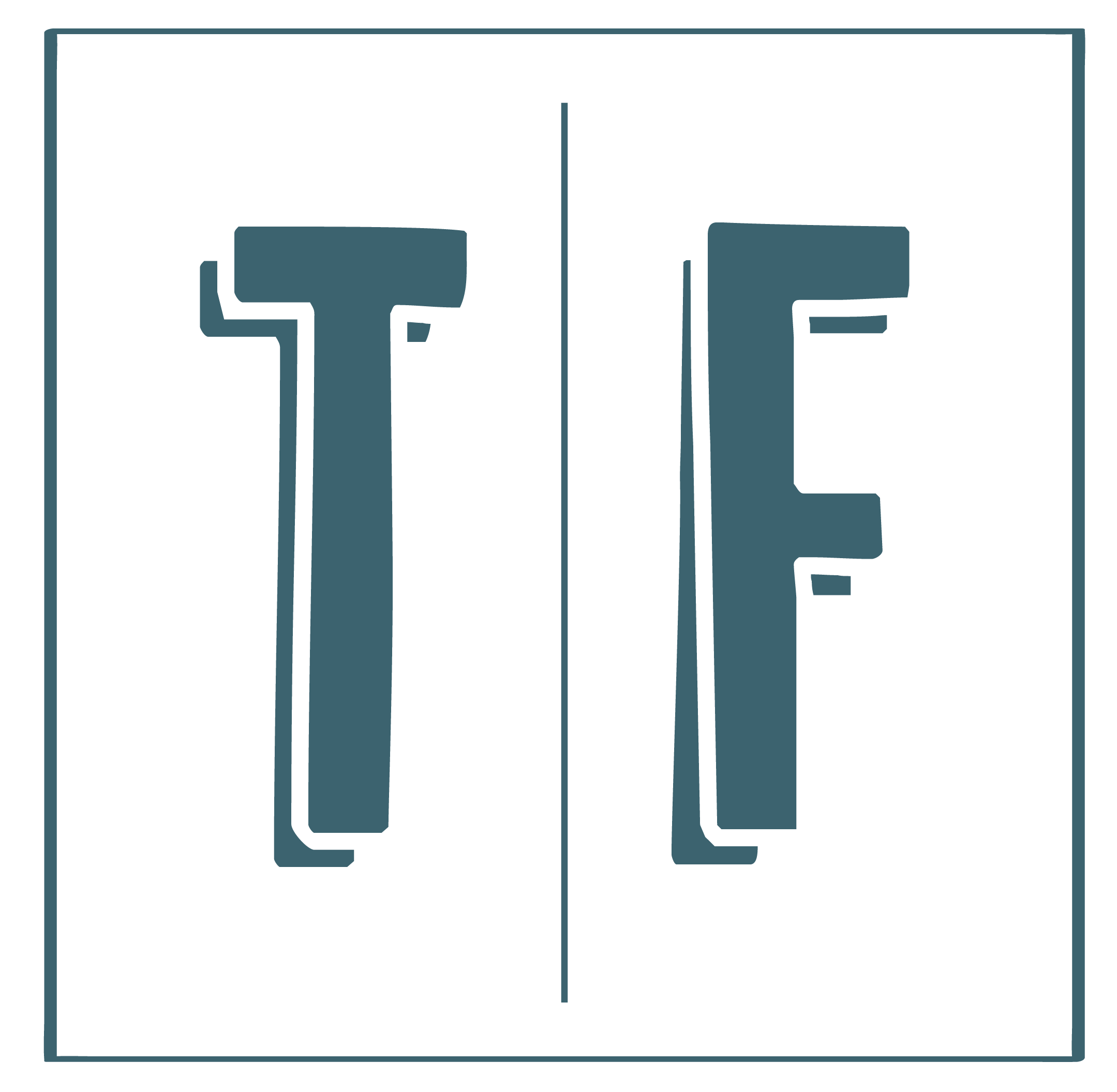

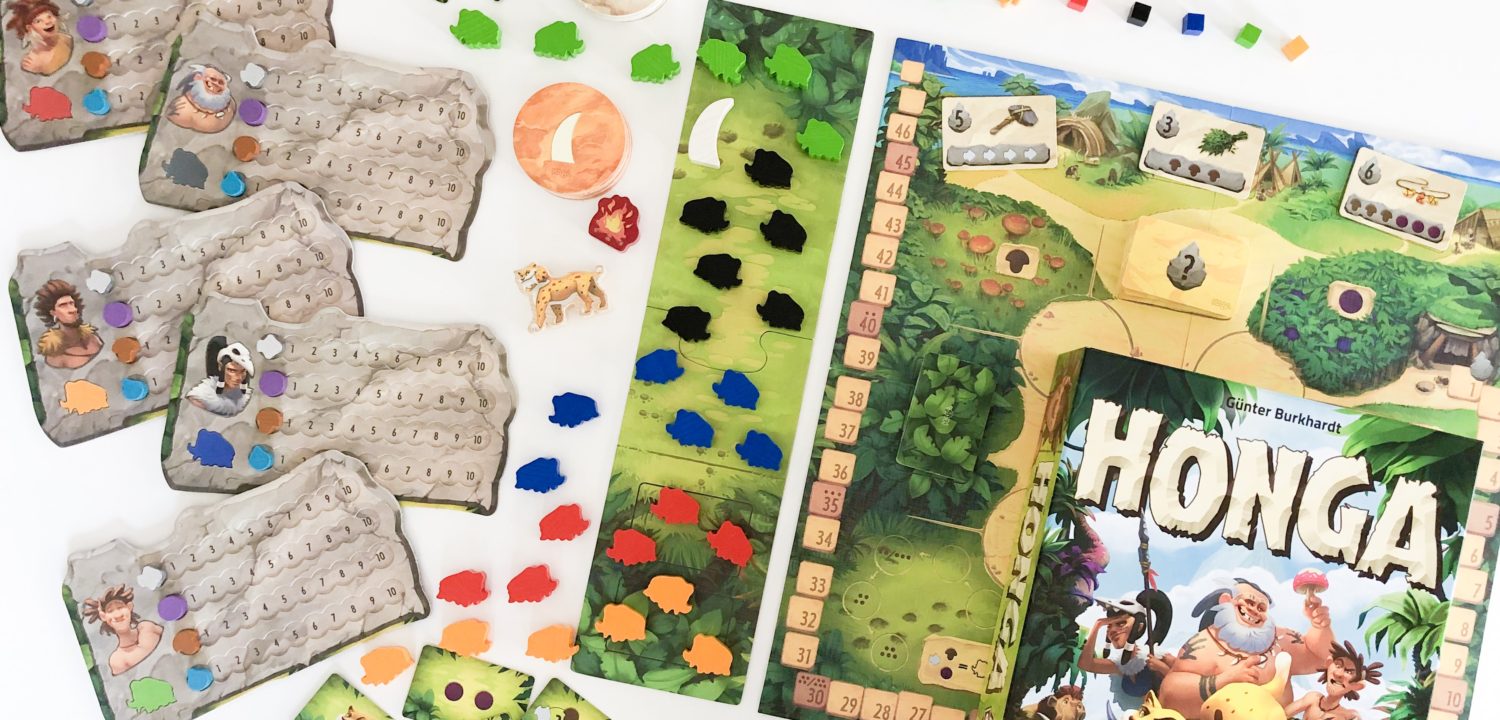

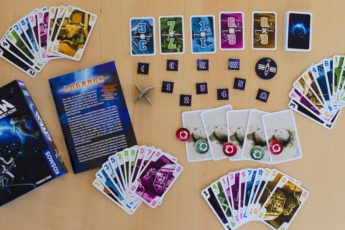
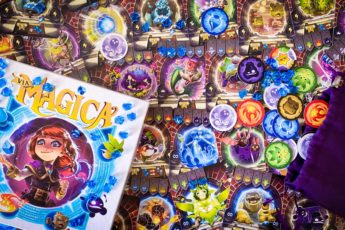




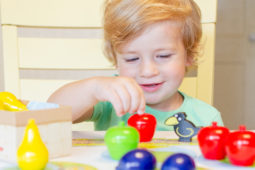
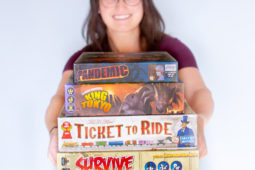
Leave a Comment